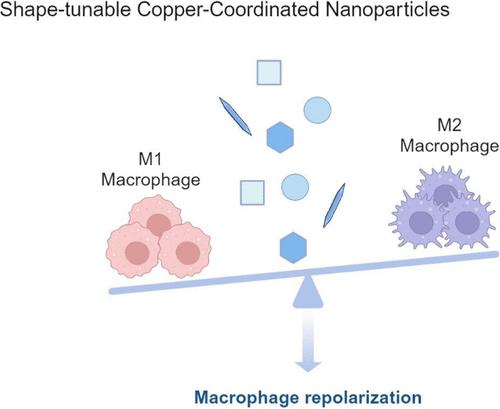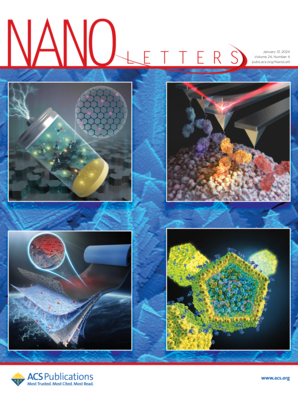Engineered Shape-Tunable Copper-Coordinated Nanoparticles for Macrophage Reprogramming
IF 9.6
1区 材料科学
Q1 CHEMISTRY, MULTIDISCIPLINARY
引用次数: 0
Abstract
The immune system safeguards as primary defense by recognizing nanomaterials and maintaining homeostasis, gaining a deeper understanding of these interactions may change the treating paradigm of immunotherapy. Here, we adopted copper as the principal component of nanoparticles (NPs), given its features of coordination with different benezenecarboxylate ligands to form metal–organic frameworks and complexes with distinct morphologies. As a result, four types of shape-tunable copper-coordinated NPs (CuCNPs) are developed: cuboctahedron, needle, octahedron, and plate NPs. Biocompatibility of CuCNPs varies across different cell lines (RAW264.7, THP-1, HEK 293 and HeLa) in a shape-dependent manner, with needle-shaped CuCNPs showing pronounced cytotoxicity (IC50:104.3 μg mL–1 at 24 h). Among different shapes, a notable increase of 8.47% in the CD206+ subpopulations is observed in needle-shaped CuCNPs, followed by 77% enhancement at 48 h. Overall, this study underscores the shape-dependent immune-regulatory effects of CuCNPs and sheds light on the rational design of nanoscale metal complexes for potential immunotherapy.

求助全文
约1分钟内获得全文
求助全文
来源期刊

Nano Letters
工程技术-材料科学:综合
CiteScore
16.80
自引率
2.80%
发文量
1182
审稿时长
1.4 months
期刊介绍:
Nano Letters serves as a dynamic platform for promptly disseminating original results in fundamental, applied, and emerging research across all facets of nanoscience and nanotechnology. A pivotal criterion for inclusion within Nano Letters is the convergence of at least two different areas or disciplines, ensuring a rich interdisciplinary scope. The journal is dedicated to fostering exploration in diverse areas, including:
- Experimental and theoretical findings on physical, chemical, and biological phenomena at the nanoscale
- Synthesis, characterization, and processing of organic, inorganic, polymer, and hybrid nanomaterials through physical, chemical, and biological methodologies
- Modeling and simulation of synthetic, assembly, and interaction processes
- Realization of integrated nanostructures and nano-engineered devices exhibiting advanced performance
- Applications of nanoscale materials in living and environmental systems
Nano Letters is committed to advancing and showcasing groundbreaking research that intersects various domains, fostering innovation and collaboration in the ever-evolving field of nanoscience and nanotechnology.
 求助内容:
求助内容: 应助结果提醒方式:
应助结果提醒方式:


